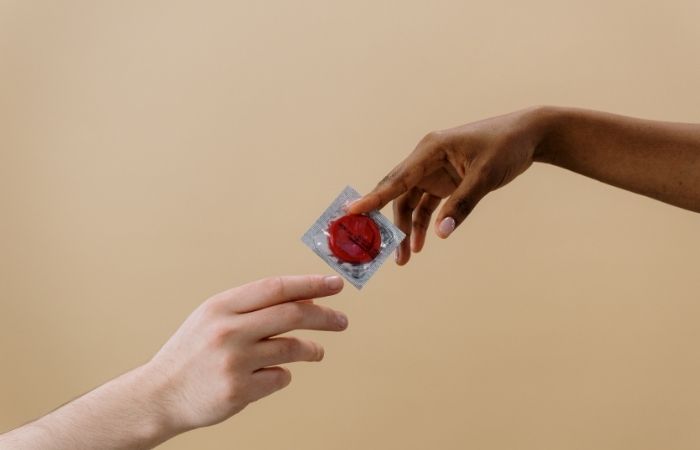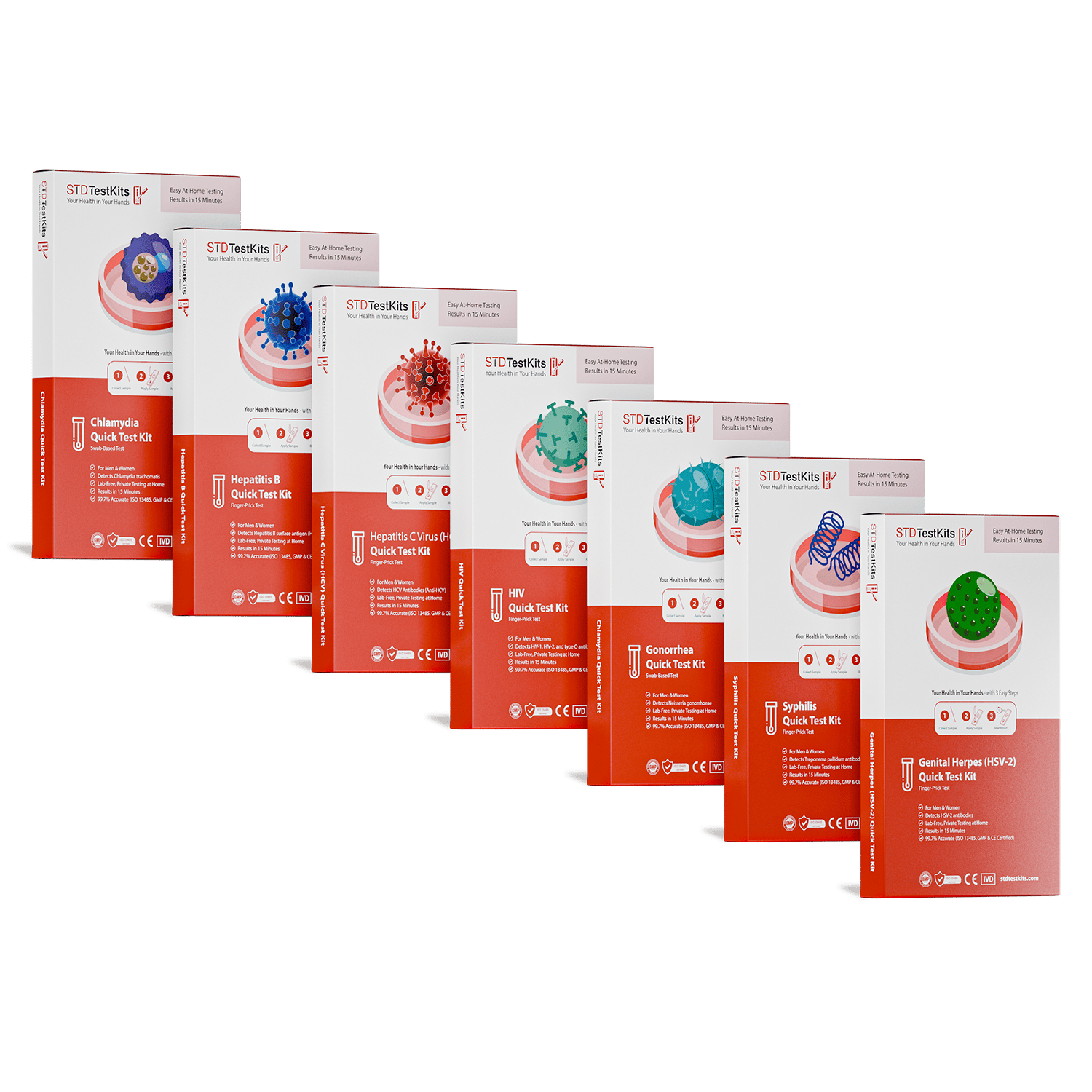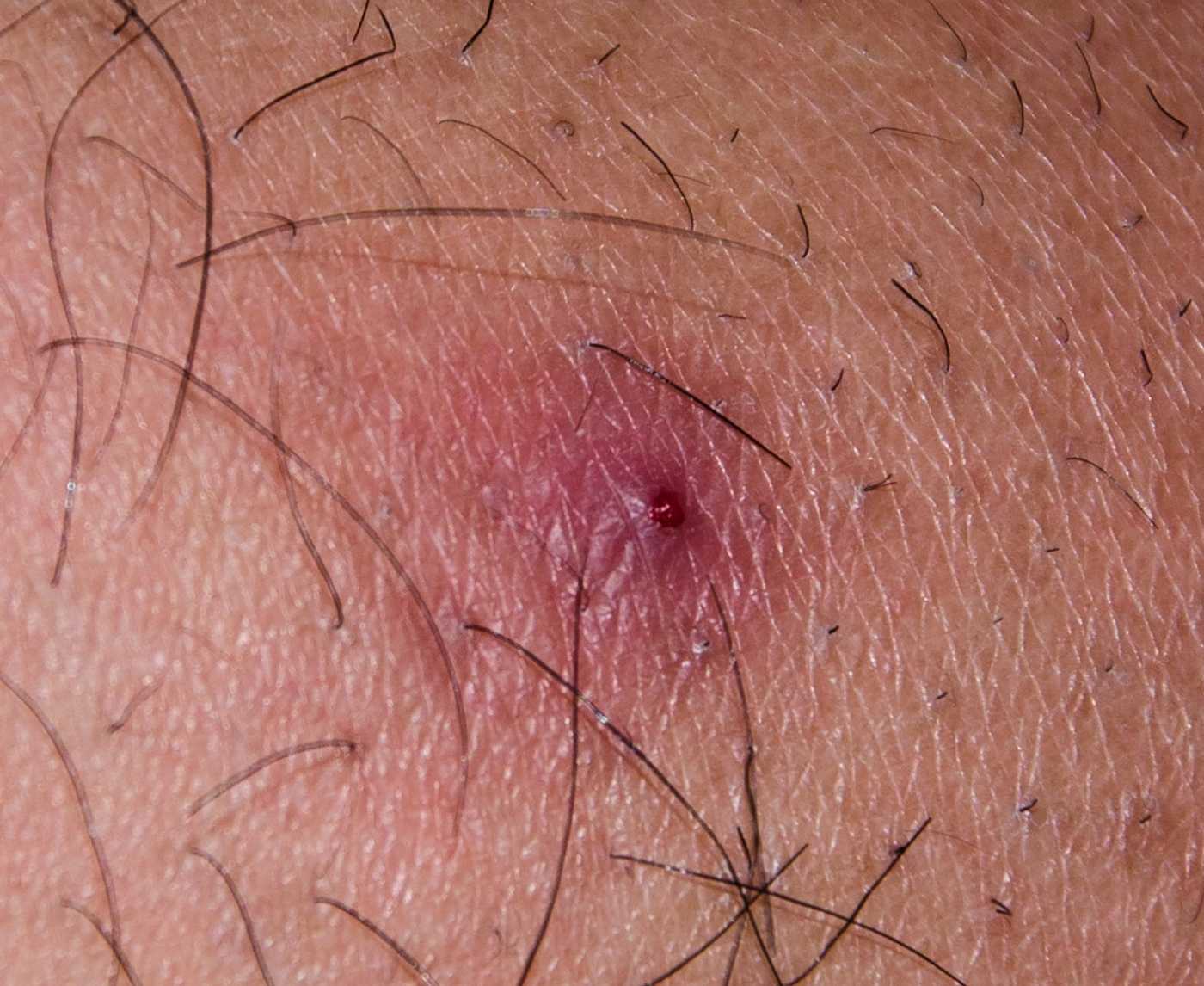Syphilis vs Herpes: How to Tell the Difference
Quick Answer: Yes, you can still get an STD even if you used protection. Condoms reduce risk but don’t block skin-to-skin transmission like Herpes, HPV, and sometimes Syphilis. Oral sex, missed testing windows, and asymptomatic infections also increase risk.
“But the Condom Didn’t Break!”, Why You’re Still at Risk
When Mark, 29, noticed small sores near his groin a week after a hookup, he was baffled. He'd used condoms every time. “I thought condoms were supposed to protect me,” he said. “I actually felt smug about it.” It wasn’t until a clinician explained that condoms don’t cover the entire genital area, and that Herpes can transmit from skin around the base of the penis, that it clicked.
That’s the part they don’t put on the condom box. Condoms are incredibly effective at reducing the risk of infections spread through fluids, like HIV, Chlamydia, and Gonorrhea. But when it comes to infections spread by skin-to-skin contact, they’re more like partial shields than full armor.
Here’s the kicker: STDs like Herpes Simplex Virus, HPV, and even early-stage Syphilis can live on skin that isn’t covered by a condom. So if your partner had a lesion on their thigh, pubic mound, or scrotum, a condom wouldn’t stop the virus from spreading. And if you received oral sex? That opens a whole different door, oral Herpes, throat Gonorrhea, and more.
Table: How STDs Still Spread Despite Condom Use
Figure 1. Not all STDs rely on fluid exchange, many spread through simple skin contact. Condoms reduce risk but can’t cover all vulnerable areas.

People are also reading: My STD Symptoms Vanished. Was I Cured, Or Just Lucky?
What Protection Really Means, And What It Doesn’t
There’s a subtle betrayal that happens when someone gets an STD after doing what they believed was “everything right.” It can feel like the rules lied to you. But the truth is, protection isn’t just about condoms. It’s about context, timing, and testing. And most people never get that full picture.
Take oral sex. Many people don’t even think of it as risky, but Gonorrhea, Syphilis, and Herpes can all be transmitted through mouth-to-genital contact. And unless you’re using dental dams or flavored condoms for every single oral encounter (and let’s be honest, very few people are), you’re exposed.
Or consider “just the tip” scenarios. Skin around the genitals touches skin before a condom is even put on, especially during foreplay. Add in the fact that some infections like HPV can live on surfaces or skin not visibly infected, and you start to understand the loopholes.
This doesn’t mean condoms aren’t worth it. They’re still one of the most powerful tools we have. But they don’t make you invincible. They’re a seatbelt, not a force field.
“It Was Just Oral”, Why That’s Still a Risk
Let’s talk about something that rarely gets said out loud: a lot of people don’t use condoms during oral sex. Maybe it feels awkward, or they assume the risk is low, or it’s just not how they were taught to think about STDs. But here’s the reality, oral sex absolutely transmits infections, especially Herpes, Gonorrhea, Syphilis, and HPV.
Case in point: Denise, 32, had only received oral sex during a one-night stand. A few days later, she felt a burning in her throat and thought it was allergies. It wasn’t. Her swab came back positive for Gonorrhea, in her throat. “I was shocked,” she said. “I didn’t even have sex. Not really.” But in medical terms, she absolutely did. And the bacteria didn’t care that no penis entered a vagina.
When we talk about “protection,” most people mean vaginal or anal penetration with a condom. But protection needs to extend to oral sex, shared toys, skin contact, and even how recently someone was tested. If any of those links are weak, the whole chain of safety breaks down.
Table: STDs Commonly Transmitted Through Oral Sex
Figure 2. Oral sex is often seen as “safe,” but several high-risk STDs can spread this way, many without noticeable symptoms.
What About Testing? Timing Is Everything
Even if you used a condom correctly, if the test you took was too soon, it may have missed something. Most STDs have what's called a window period, the time between exposure and when a test can reliably detect an infection. So if you test two days after a hookup, a negative result doesn’t mean you're in the clear. It means the test may have been too early.
Here’s where confusion gets dangerous. Many people test “for peace of mind” immediately after sex, and assume a negative means they’re fine. Then, symptoms show up weeks later, and they feel betrayed by their own test result. But the test wasn’t wrong, it was just premature.
Let’s look at an example: Sam, 24, used condoms with a casual partner and tested three days later. Negative across the board. But ten days in, he noticed discharge and mild burning. A retest at day fifteen confirmed Chlamydia. His first test didn’t fail, it was just too early to catch the infection.
This is why understanding when to test matters almost as much as whether you test at all. Some infections show up fast. Others take weeks to be detectable. Retesting later, especially if symptoms appear, isn’t being paranoid. It’s being thorough.
Table: Window Periods for Common STDs
Figure 3. Testing too soon after exposure can lead to false negatives, especially with Syphilis or Herpes. Know your window.
When to Retest (Even If You Feel Fine)
Testing once doesn’t mean you’re done, especially if the test happened early. The general rule? If it’s been less than 14 days since exposure, and you tested already, retest after the two-week mark to confirm. If symptoms appear at any point, don’t wait, test again.
Some clinics offer “early detection” tests, but these may still miss low-level infections. At-home rapid tests are excellent for privacy and convenience, but you must time them properly to get accurate results. That’s why the best approach is this: test at the right time, then follow up later if anything changes.
If you’re still unsure when to test, or need a discreet way to do it, this combo test kit covers the most common STDs and can be done from home, no appointment needed. You deserve peace of mind that actually sticks.
What If You Still Get a Positive Result After “Playing It Safe”?
Let’s imagine this: you sit on the edge of your bed, phone in hand, blinking at the result. Positive. For Herpes. Or maybe it’s Chlamydia. And your mind reels, not because you cheated, not because you were reckless, but because you genuinely believed you were safe. You used a condom. You asked the right questions. Maybe you even got tested together.
This is where so many people spiral. They assume their positive result means they were reckless, dirty, or lied to. But that’s not the truth. The truth is that most STDs spread when people don’t even know they’re contagious. Up to 90% of people with Herpes don’t know they have it. HPV can be passed even without visible warts. And Chlamydia is famously quiet, especially in men, until complications arise.
None of this means you did something wrong. It just means the current model of “protection” most of us learn isn’t enough. It doesn’t account for timing, asymptomatic infections, partial coverage, or the nuances of real-world sex. That’s why testing isn’t a confession, it’s an act of care. For yourself. For your partners. For clarity.

People are also reading: I Had Hepatitis C for Years and Had No Idea
Confused by Your Symptoms? Here’s What to Watch For
You’ve used protection, but something still feels off. Now what? Here’s the thing, STD symptoms vary wildly. Some are obvious: discharge, sores, burning. Others are subtle: itching, slight discomfort, unusual smells, or even fatigue. And some, like early HPV or Syphilis, may not show anything at all for weeks or months.
Let’s revisit Mark, the 29-year-old from earlier. His first “symptom” wasn’t a sore, it was a tingle. Just a weird buzzing around his waistband area. He ignored it until a small blister showed up three days later. By the time he got tested, it was a full primary outbreak of HSV-2. The scariest part? His partner hadn’t had any signs at all.
Don’t wait for a crisis to test. Don’t wait for a flare-up. If something feels off, even a little off, test sooner rather than later. The earlier you catch an infection, the easier it is to treat or manage. And the less likely you are to pass it along.
Call It What It Is: A System That Leaves Out the Whole Truth
Sex ed taught many of us that condoms equal safety. But that curriculum rarely mentioned skin-to-skin STDs, oral transmission, testing windows, or asymptomatic spread. It was incomplete, and that incompleteness is what leads people to confusion, shame, and silent suffering.
At-home STD testing can help fill that gap. It allows you to act without delay, without having to make an appointment, and without having to justify your concerns. Whether you're feeling symptoms or just unsure if a recent encounter was as “safe” as you thought, discreet test kits empower you to get answers on your terms.
If you’re ready to take that step, or just need a backup after a risky moment, STD Rapid Test Kits offers privacy, speed, and clarity. You don’t need to wait, panic, or guess. You can know. And knowing is power.
FAQs
1. Can you really get an STD even if the condom doesn’t break?
Yes, and it messes with your head, right? You follow the rules, and it still happens. But some STDs like Herpes, HPV, and even Syphilis don’t need fluid exchange to spread. They live on skin. So even if the condom held up perfectly, anything it didn’t cover, like your partner’s inner thigh or pubic area, could still pass something along. It’s not about failure. It’s about biology being sneakier than we were told.
2. What if I only got oral, can I still catch something?
Short answer: yes. Oral sex is real sex in the eyes of Herpes, Gonorrhea, and Syphilis. They don't care if you never "went all the way." Throat Gonorrhea is more common than most people realize, and Herpes can pass mouth-to-genitals during what feels like a low-risk hookup. If someone ever told you oral was safe because it’s “not real sex,” they left out the science, and probably a few doctor visits too.
3. I tested right after sex and it came back negative, am I good?
Not necessarily. That first test is like taking a pregnancy test an hour after sex: way too early to know. Each STD has a window period, the time between exposure and when it actually shows up on a test. Some are quick (Gonorrhea in a few days), others take weeks (Syphilis, Herpes). If your gut is still nagging at you, or symptoms creep in later, it’s smart, not paranoid, to test again after the window closes.
4. How do I know if this weird symptom is from an STD or something else?
That’s the trick, sometimes you don’t. A little burning could be a UTI. An itch could be friction. A bump could be a pimple. Or… it could be something that needs treatment. The only way to know for sure is to test. One reader thought her razor burn was just that, until it blistered. It turned out to be HSV-2. Listen to your body. It whispers before it screams.
5. Do at-home STD tests even work?
They do, if you get a legit one. The best at-home rapid tests use the same technology clinics use, just packed for privacy. As long as you follow the directions and time your test right, you’ll get results you can trust. Mail-in kits go to real labs. No one’s running your test in a garage somewhere. And honestly? For a lot of people, privacy makes them more likely to test, which means earlier treatment, and that’s a win.
6. Why would I need to test again if I already got treated?
Because bodies and bacteria don’t always sync up perfectly. Some infections stick around longer than expected, or you might get reinfected if your partner didn’t get treated too. We’ve seen it happen: a couple treats Chlamydia once, only to pass it back and forth like a cold. A follow-up test is like a double-check, not because you don’t trust the meds, but because you trust your future.
7. What’s the point of testing if I don’t feel anything?
Because most people with STDs feel... nothing. At least not right away. Chlamydia and HPV can hang out quietly for weeks or months. That silence doesn’t mean safety. It just means they’re good at hiding. Testing is about what’s real, not just what you can feel. And catching it early means you avoid messy complications later.
8. What do I do if my test is positive and I used protection?
First, breathe. Seriously. It doesn’t mean you were reckless. It means the world is messier than condoms can contain. Next, confirm your results if needed, and follow treatment steps, whether that’s meds for Chlamydia or managing Herpes outbreaks. Then, talk to your partners (you can do it anonymously), and plan your next test. A positive result isn’t an ending. It’s a pivot.
9. Will I have to tell future partners about this forever?
That depends on the STD, but honesty helps, not just for ethics, but for actual connection. You’d be surprised how many people respond with care, not rejection. Especially when you frame it as: “Here’s how I keep both of us safe.” And if someone ghosts you over an honest health conversation? That’s not someone who deserves access to your body anyway.
10. I feel gross even asking this. Is that normal?
Yes. And it sucks that you do, but it makes sense. We live in a culture that treats STDs like punishments, not infections. But asking these questions doesn’t make you gross. It makes you informed. And responsible. And strong. The shame you feel? That’s not your voice. It’s the echo of silence around sex education. You’re not alone. And you’re definitely not dirty.
You're Not Alone, And You’re Not Broken
If you’ve made it this far, you’ve probably been carrying a lot, confusion, fear, maybe even anger at your own body. But here’s the truth: getting an STD doesn’t mean you failed. It means the system didn’t teach you everything. And now you know more. That’s powerful.
Whether you’re burning with questions or just trying to feel normal again, know that clarity is possible. You deserve peace of mind, and you deserve tools that respect your privacy. This discreet combo test kit checks for the most common STDs and delivers results quickly, no clinic visits, no awkward waiting rooms.
Take your next step. Not in fear, but in power.
How We Sourced This Article: We combined current guidance from leading medical organizations with peer-reviewed research and lived-experience reporting to make this guide practical, compassionate, and accurate.
Sources
1. Mayo Clinic – STD Symptoms and Prevention
3. Primary Prevention Methods – CDC STD Treatment Guidelines
4. About Genital HPV Infection – CDC
5. Herpes Simplex Virus – WHO Fact Sheet
6. Effectiveness of Condoms in Preventing Sexually – NIH Bookshelf
7. The Lowdown on How to Prevent STDs – CDC
8. Do Condoms Protect Against All STIs? – Medical News Today
About the Author
Dr. F. David, MD is a board-certified infectious disease specialist focused on STI prevention, diagnosis, and treatment. He blends clinical precision with a no-nonsense, sex-positive approach and is committed to expanding access for readers in both urban and off-grid settings.
Reviewed by: Jenna Martinez, NP | Last medically reviewed: November 2025
This article is meant to give you information, not to give you medical advice.







